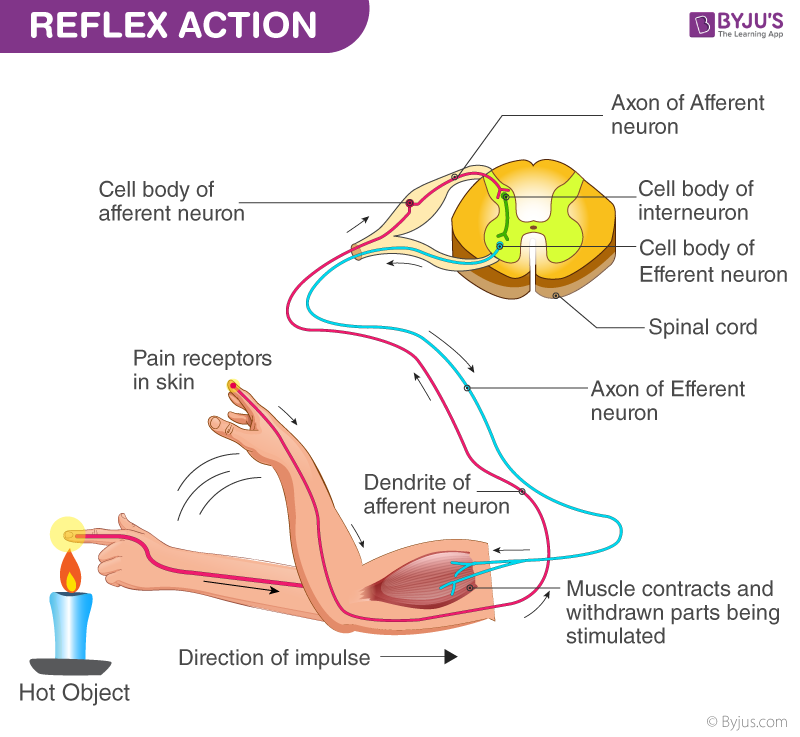Overview
Do you know that you perform some actions without even thinking. Ever thought why do we blink when someone brushes his hands off our face? When our hands touch anything hot, the hands automatically moves away from the hot pan immediately. These are all the examples of reflex actions. Reflex actions are the involuntary movement of a body part as a result of a particular stimulus. These actions are involuntary as neither any will or consciousness is required to access.
Probably the best-known reflex is the pupillary light reflex. If a light is flashed near one eye, the pupils of both eyes contract. Light is the stimulus, impulses reach the brain via the optic nerve, and the response is conveyed to the pupillary musculature by autonomic nerves that supply the eye. Reflexes are there to protect our body parts.

Types Of Reflex Actions
You come across various types of reflexes without even thinking, let’s explore the most common reflexes that occurs day in and day out in our body:
-
- Accommodation reflex: The most common reflex of eyes, that helps the pupils, lens and vergence change the shape to accommodate of sight, when we look at distance object and near object. The change in shape is made by the ciliary muscles of the eyes.
- Pupillary light reflex: If a light is flashed near one eye, the pupils of both eyes contract. Light is the stimulus, impulses reach the brain via the optic nerve, and the response is conveyed to the pupillary musculature by autonomic nerves that supply the eye. Reflexes are there to protect your body parts.
- Acoustic Reflex: The word acoustic might ring a bell in your ears? Well yes, it is related to contraction of stapedius and tensor tympani muscles in the middle ear that responses to high decibel sounds.
- Ankle jerk reflex: The jerking of ankle is the common reflex action that is tested by the doctors to check the reflex. This reflex helps maintain the balance and posture of a person, that allows to maintain the balance with little effort and conscious thought. The doctors tests the knee jerk reflex by hitting the hammer on the knee. Absence of reflex may indicate receptor damage or peripheral nerve disease.
- Biceps reflex:The jerking of forearm when biceps brachii tendon is struck with tendon hammer leads to biceps reflex. Biceps reflex are also used to detect reduced reflexes. Absent reflexes are used as clues to locate neurological disease.
- Blushing: This, perhaps doesn’t need any introduction. Blushing refers to the reddening of the face caused by embarrassment, shame or modesty. This is faced by a person because of psychological reasons.
- Corneal reflex — Refers to blinking of both eyes when the cornea of either eye is touched. This reflex is responsible to act when dust or foreign particles accidentally enters our eyes. Use of contact lens may diminish or abolish the testing of this reflex.
- Cough reflex — When a dust enters our trachea or respiratory tract, the cough receptors produces a cough which in turn remove the foreign material from the tract before it reaches the lungs.
- Sneeze: Irritation of nasal mucosa in the nose create a sneeze that helps get rid of the foreign particle in the nostrils.
So these were the common reflex actions that we come across each day without us knowing. Is it amazing to see how our body works to keep us safe and free from any foreign particles? Want to read about the neurological cells working and the nervous system associated that helps in performing involuntary reflex actions? Click this link to read on. Click here to read about the Reflex Action cycle in our body.

Comments